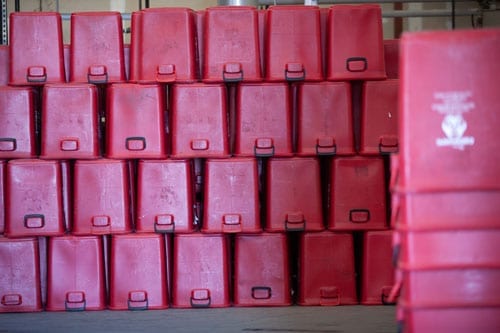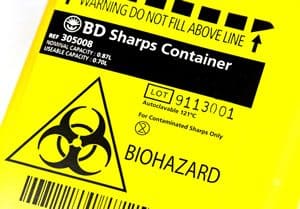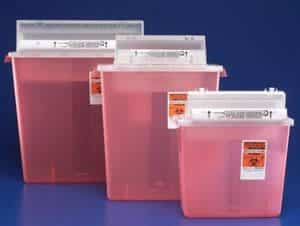
Medical Waste Containers: What You Need to Know
Medical Waste Containers: What You Need to Know
 Disposing of medical waste means following proper procedures and practices that will keep patients, staff, and the public safe. Medical waste can be generated from any facility that handles bodily fluids, bio-hazardous waste, or medical sharps. This includes doctor’s offices, veterinary clinics, and even tattoo parlors. One of the most important aspects of proper medical waste disposal is medical waste containers. Here is what you need to know about them to have a compliant disposal plan.
Disposing of medical waste means following proper procedures and practices that will keep patients, staff, and the public safe. Medical waste can be generated from any facility that handles bodily fluids, bio-hazardous waste, or medical sharps. This includes doctor’s offices, veterinary clinics, and even tattoo parlors. One of the most important aspects of proper medical waste disposal is medical waste containers. Here is what you need to know about them to have a compliant disposal plan.
What Is Medical Waste?
First, it is important to understand what constitutes medical waste. Not all waste generated by a healthcare facility will be classified as such. Medical waste refers to waste that must be segregated and placed in medical waste containers for safety. These include actual body parts, items that have been contaminated by blood, and sharps, for example. Medical waste can also include medication, bodily fluids, and radioactive waste. In a sense, it’s waste that has the potential to cause harm to people or the environment.
Medical Waste Containers
If your facility generates medical waste, then you must have somewhere to place that waste for storage and disposal. Any facility that generates this type of waste must be compliant with all laws and regulations that govern the industry. Using the proper medical waste containers is at the very heart of a good medical waste management strategy. Medical waste containers are incredibly important. They are used not just for staff to dispose of the waste, but also for removal from the property. They are what protect the outside world from punctures, infections, and any other possible hazard involving medical waste. That means, they must be certified to protect against all those things. They cannot be simply leftover food containers repurposed to handle medical waste.
Identification on Containers
All medical waste containers must be color-coded. That way, your employees will be able to recognize which types of waste each container is meant to hold. Medical waste falls into several categories, and those categories have different requirements for disposal. Using color-coded containers will ensure that waste is handled properly and safely. There are no federal requirements, but there are some common color-codes. Red tends to indicate biohazardous waste. Yellow is for chemotherapy waste. In some facilities, they use linen containers as well. Black is for P-listed drugs and anything regulated by the RCRA. Blue is for pharmaceutical waste that is not RCRA regulated, such as antibiotics.
Options and Sizes
There is no doubt that there is a size and option for every medical waste container type that will suit your needs. Every facility is different, and there needs to be flexibility in container options so that disposal is always as easy and simple as possible. Containers can be baskets, carts, wall-mounted, or pretty much anything else you can think of for a disposal bin. They can all vary in size from a small 1-quart bin all the way to 20 gallons.
Waste Disposal Services
If you run a facility that generates medical waste, then you should be using the services of a professional. Disposing of medical waste is crucial for the health and safety of your patients and staff, and you need to make sure it is done right. A professional service is fully trained in all applicable laws and regulations and should be fully certified. You can work with them for scheduling pickups, training, and anything else related to disposing of medical waste. Using medical waste containers is an important part of a secure waste management plan. Do not leave the health and safety of your staff and patients to chance.








